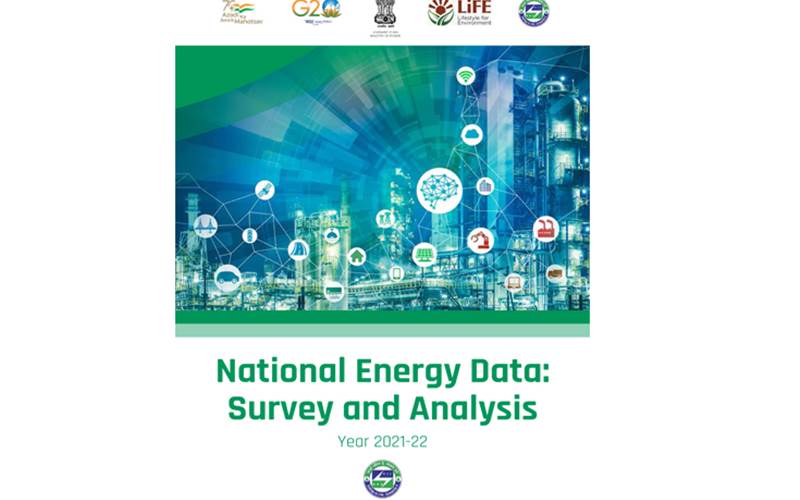First-ever comprehensive energy sector report released
The Union Ministry of Power has come out with a comprehensive energy sector report titled National Energy Data: Survey and Analysis 2021-22, which is the maiden report of the Energy Data Management Unit, set up under Bureau of Energy Efficiency, Ministry of Power, Government of India. The report provides granular information about energy supply and consumption patterns across various sectors of the Indian economy.
26 Jun 2023 | By Dibyajyoti Sarma
The report contains extensive data compiled for the last six years, from FY 2016-17 to FY 2021-22, along with trends and analysis of fuel-wise energy consumption in major end-use sectors. This report also provides an overview of the impact of various energy conservation policies and their associated carbon dioxide emission reduction and monetary savings. The report has been prepared by Ministry of Power through Bureau of Energy Efficiency in collaboration with NITI Aayog, various line Ministries and Departments, institutions, and other stakeholders.
The highlights:
Value addition: This report provides granular fuel-wise energy consumption data for various sectors. This detailing will enable a better understanding of the energy profile of various sectors, sub-sectors and consumer groups.
The use of distinct conversion factors (of domestic coal and imported coal) for different years based on different calorific values of coal gives a realistic picture of coal-based energy supply and consumption in the country.
In the latest edition of 2023 Report of Ministry of Statistics & Programme Implementation, the conversion factors of coal have been derived using a weighted average methodology rather than using a single representative GCV for all grades of coal.
This report also provides an overview of the impact of various policies on energy savings and CO2 emission reduction with corresponding monetary savings.
New Insights: Energy supply to economy during the last six years is actually less by 18%; this has been found out by using Indian coal conversion factors, rather than IEA conversion factors which have been used before lower energy consumption value by 8% in 2021-22. Increased share of electrification on consumption side to 20.9%.
Usefulness: The information provided in this report will help in assessing the status of data availability of various energy products in the country. It can also help in analysing energy intensity of the country thereby enabling policy-makers to formulate robust policies and carry out course corrections.
Way Forward: There exists limited data on non-commercial energy sources such as biomass although these modes meet significant energy needs. There appeared a need to bridge the existing gap in the exploration side of data (i.e., 2D, and 3D surveys). There is also a possibility that a significant amount of data could be collected from government-subsidized projects and disseminated and would be captured in the upcoming editions of the report.
Releasing the report, the Union minister for power and new & renewable energy RK Singh emphasised the importance of data and recalled that a lot of history regarding India was based on research conducted by those coming from outside, which posed problems due to insufficient expertise of such foreign researchers. The minister said that the debate on carbon emissions has to be on per capita basis, and not on an aggregate basis for each country. The minister underlined the need for data on energy usage, such as the comparative cost of gas-based cooking and solar cooking. “Our whole objective is to reduce dependence on imported sources of energy. The way to do this is two-fold, to electrify the economy and then to green the energy,” he said.
The minister spoke of the need for data on green feedstock, so that we know how much green feedstock is required to make the energy transition. “The BEE needs strengthening. We also need data from other countries. Ownership of data is absolutely vital, which helps us understand and explain better,” said.
The report can be accessed here.












 See All
See All